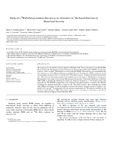
Please use this identifier to cite or link to this item:
http://ricaxcan.uaz.edu.mx/jspui/handle/20.500.11845/740Full metadata record
| DC Field | Value | Language |
|---|---|---|
| dc.contributor | 6207 | es_ES |
| dc.contributor.other | https://orcid.org/0000-0002-7081-9084 | es_ES |
| dc.coverage.spatial | Global | es_ES |
| dc.creator | Guzmán García, Karen Arlete | - |
| dc.creator | Vega Carrillo, Héctor René | - |
| dc.creator | Gallego Díaz, Eduardo | - |
| dc.creator | Lorente, Alfredo | - |
| dc.creator | Mendez Villafañe, Roberto | - |
| dc.creator | González, Juan | - |
| dc.date.accessioned | 2019-03-13T20:45:37Z | - |
| dc.date.available | 2019-03-13T20:45:37Z | - |
| dc.date.issued | 2016-11 | - |
| dc.identifier | info:eu-repo/semantics/publishedVersion | es_ES |
| dc.identifier.issn | 0969-8043 | es_ES |
| dc.identifier.uri | http://localhost/xmlui/handle/20.500.11845/740 | - |
| dc.identifier.uri | https://doi.org/10.48779/0gzf-3n61 | es_ES |
| dc.description.abstract | The response of a scintillation neutron detector of ZnS(Ag) with 10B was calculated, using the MCNPX Monte Carlo Code. The detector consists of four panels of polymethyl methacrylate (PMMA) and five thin layers of ~0.017 cm thick 10B+ZnS(Ag) in contact with the PMMA. The response was calculated for the bare detector and with different thicknesses of High-Density Polyethylene, HDPE, moderator for 29 monoenergetic sources as well as 241AmBe and 252Cf neutrons sources. In these calculations, the reaction rate 10B(n, α)7Li and the neutron fluence in the sensitive area of the detector 10B+ZnS(Ag) was estimated. Measurements were made at the Neutron Measurements Laboratory, Universidad Politécnica de Madrid, LMN-UPM, to quantify the detections in counts per second in response to a 252Cf neutron source separated 200 cm. The MCNPX computations were compared with measurements to estimate the efficiency of ZnS(Ag) for detecting the ? that is created in the 10B(n, α)7Li reaction. After validating new models with different geometries it will be possible to improve the detector response trying to achieve a sensitivity of 2.5 cps-ng252Cf comparable with the response requirements for 3He detectors installed in the Radiation Portal Monitors, RPMs. This type of detector can be considered an alternative to the 3He detectors for detection of Special Nuclear Material, SNM. | es_ES |
| dc.language.iso | eng | es_ES |
| dc.publisher | ELSEVIER | es_ES |
| dc.relation | http://oa.upm.es/45496/1/INVE_MEM_2015_246084.pdf | es_ES |
| dc.relation.uri | generalPublic | es_ES |
| dc.rights | Atribución-NoComercial-CompartirIgual 3.0 Estados Unidos de América | * |
| dc.rights.uri | http://creativecommons.org/licenses/by-nc-sa/3.0/us/ | * |
| dc.source | Applied Radiation and Isotopes, Vol. 117 ; pp. 58-64 | es_ES |
| dc.subject.classification | CIENCIAS FISICO MATEMATICAS Y CIENCIAS DE LA TIERRA [1] | es_ES |
| dc.subject.other | MCNPX | es_ES |
| dc.subject.other | Neutron detection | es_ES |
| dc.subject.other | Special nuclear materials | es_ES |
| dc.subject.other | Radiation portal monitors | es_ES |
| dc.title | Study of a 10B + ZnS(Ag) neutron detector as an alternative to 3 He-based detectors in Homeland Security | es_ES |
| dc.type | info:eu-repo/semantics/article | es_ES |
| Appears in Collections: | *Documentos Académicos*-- UA Ciencias Nucleares | |
Files in This Item:
| File | Description | Size | Format | |
|---|---|---|---|---|
| INVE_MEM_2015_246084.pdf | 1,12 MB | Adobe PDF |  View/Open |
This item is licensed under a Creative Commons License
